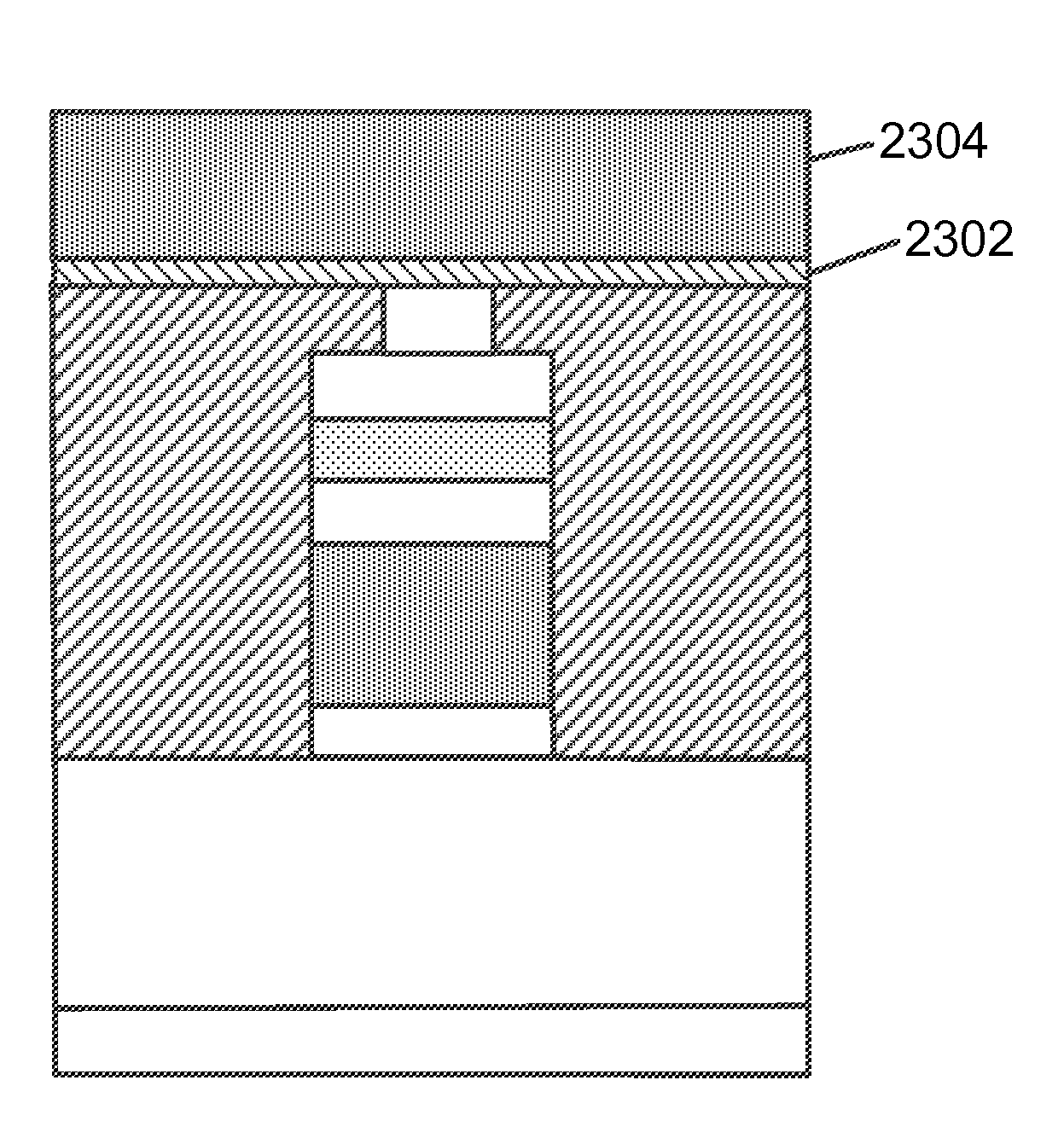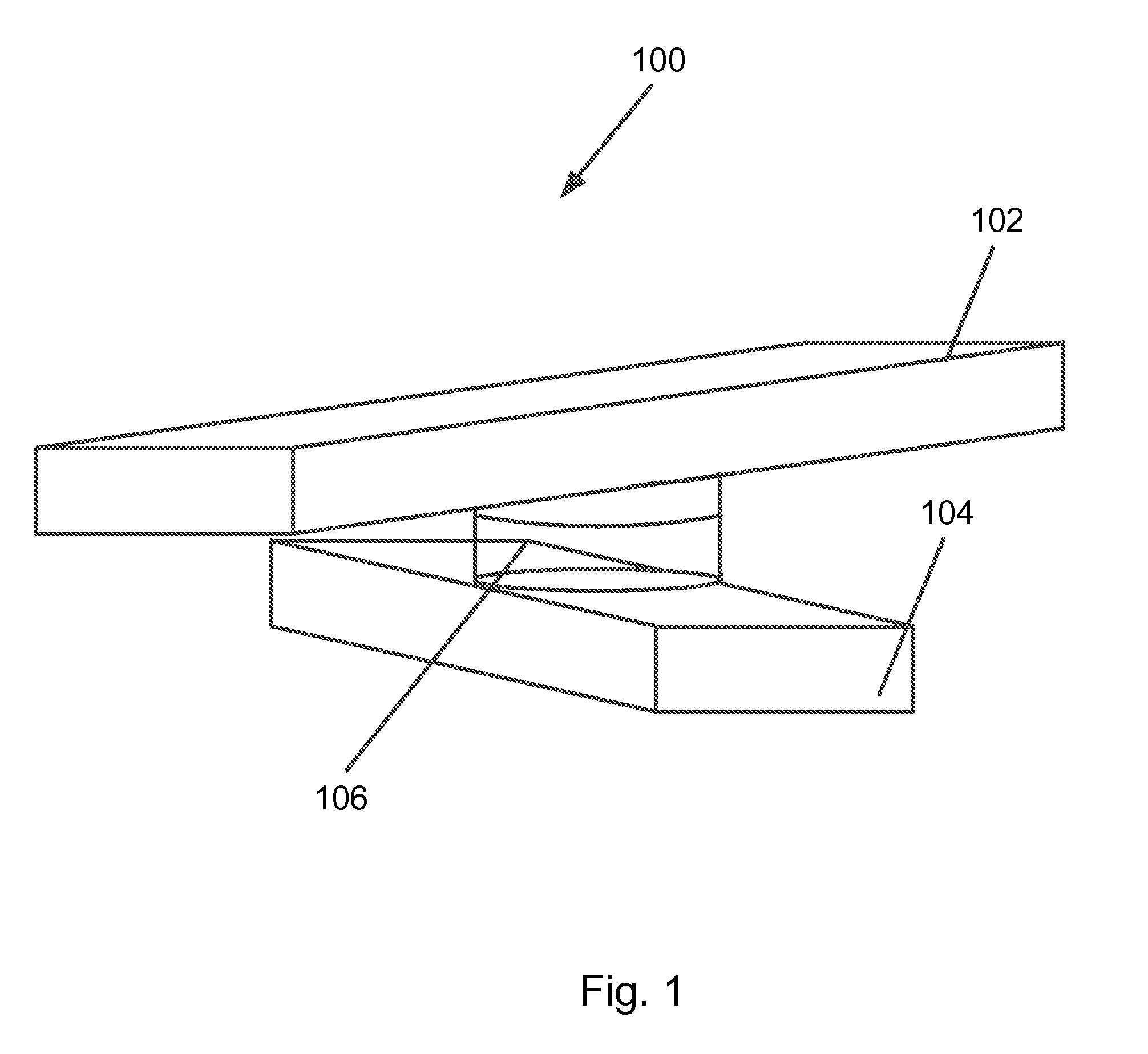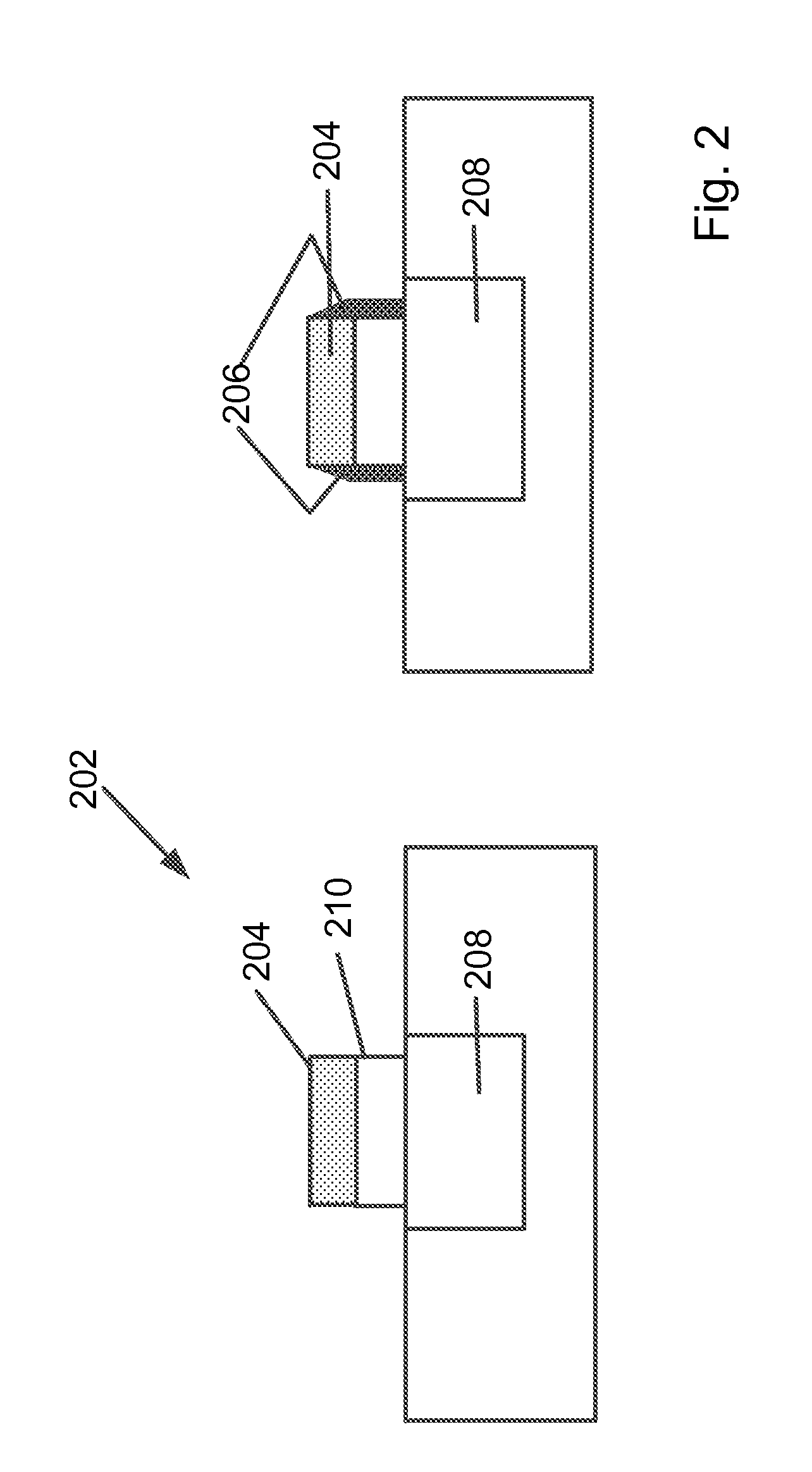Two terminal resistive switching device structure and method of fabricating
a switching device and resistive technology, applied in the direction of semiconductor/solid-state device manufacturing, basic electric elements, electric devices, etc., can solve the problems of increasing power dissipation, preventing proper device operation, and non-scaling of sub-threshold slopes
- Summary
- Abstract
- Description
- Claims
- Application Information
AI Technical Summary
Benefits of technology
Problems solved by technology
Method used
Image
Examples
Embodiment Construction
[0018]The present invention is in general related to two terminal devices. More particularly, embodiments of the present provide a method and a structure for a two terminal switching device. The two terminal switching device may be used in non-volatile resistive switching memory devices that provide for random access, fast switching, and are scalable to very small sizes. But it should be recognized that the present invention can have a much broader range of applicability.
[0019]For switching devices using resistive switching, selected materials are used for each of the electrodes or the wiring structures. For example, a noble metal such as platinum is used for a nickel oxide-based resistive switching device to provide an ohmic contact to the device and to prevent chemical reaction with the switching material. Certain solid electrolyte based (for example, GeSe) switching devices or amorphous silicon based switching devices use silver as at least one of the electrode materials or conta...
PUM
 Login to View More
Login to View More Abstract
Description
Claims
Application Information
 Login to View More
Login to View More - R&D
- Intellectual Property
- Life Sciences
- Materials
- Tech Scout
- Unparalleled Data Quality
- Higher Quality Content
- 60% Fewer Hallucinations
Browse by: Latest US Patents, China's latest patents, Technical Efficacy Thesaurus, Application Domain, Technology Topic, Popular Technical Reports.
© 2025 PatSnap. All rights reserved.Legal|Privacy policy|Modern Slavery Act Transparency Statement|Sitemap|About US| Contact US: help@patsnap.com



